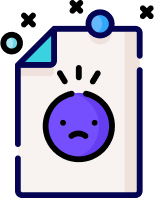What you will learn
-
none
There has been a continual debate on which programming language/s to learn, to use. As the latest TIOBE Index for May 2019 indicates – Java (16%), C (14%), C++ (8%), Python (8%), and C# (4%) together control nearly half the programming community. Given this, it is still important to learn C and C++ because of the efficiency they offer. While we appreciate that Java is good for applications, for graphics; and we acknowledge that Python is appropriate for portable software, engineering problem solving (especially ML), and graphics; it is worth bearing in mind that the JVM (Java Virtual Machine) and PVM (Python Virtual Machine - Python interpreter) are indeed written in C++, making C++ the father of all languages today. Well, C++ is the systems language. It is multi-paradigm - procedural, object-oriented, functional, and generic. So, why should I learn it if my primary focus is on applications? The answer lies in the recent updates of C++, namely, C++11, C++14, C++17, and upcoming C++20 that offer excellent depths and flexibility for C++ that no language can match. These extensions attempt to alleviate many of the long-standing shortcomings of C++ including porous resource management, error-prone pointer handling, expression semantics, and better readability. The present course builds up on the knowledge of C programming and basic data structure (array, list, stack, queue, binary tree etc.) to create a strong familiarity with C++98 and C++03. Besides the constructs, syntax and semantics of C++ (over C), we also focus on various idioms of C++ and attempt to go to depth with every C++ feature justifying and illustrating them with several examples and assignment problems. On the way, we illustrate various OOAD (Object-Oriented Analysis and Design) and OOP (Object-Oriented Programming) concepts. While this course can be understood independently (after a course in C programming), it would help in developing understanding in OOP. Hence this course is advised in conjunction with OOAD. End Note: If you wonder how C++ stands against Java, note the relative movement of the languages since 2016 (when these course videos were recorded) till 2019. In 2016, Java stood at 21% and C/C++ combine at 20%. In 2019, Java has slipped to 16% and C/C++ combine has climbed to 22%. And Java is an application programming language while C++ is a systems language!




















































No Discussion Found
0.0
0 Reviews
Meet Your Instructor
About Instructor
VTU is one of the largest Technological Universities in India with 24 years of Tradition of excellence in Engineering & Technical Education, Research and Innovations. It came into existence in the year 1998 to cater the needs of Indian industries for trained technical manpower with practical experience and sound theoretical knowledge.

Free
-
Course Duration30 h 41 m 46 s
-
Course LevelIntermediate
-
Student Enrolled1
-
LanguageEnglish
This Course Includes
- 30 h 41 m 46 s Video Lectures
- 2 Quizzes
- 0 Assignments
- 0 Downloadable Resources
- Full Lifetime Access
- Certificate of Completion
